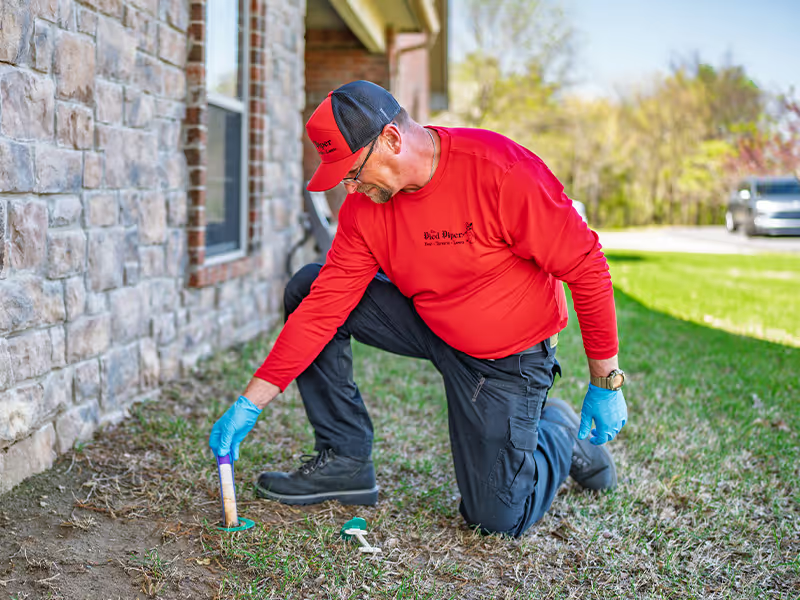Summer Heat Or Inclement Weather Drives Ants Indoors
Ants are survival experts. In the intense heat of a Texas or Oklahoma summer, conditions outdoors can become too dry, or food sources can dry up. Heavy storms can also flood nests. Either way, your home looks pretty inviting with climate control, crumbs, and leaky faucets.
Once a scout ant finds what it’s looking for (even just a sticky spot on the floor), it signals the rest of the colony to follow. Before long, a small trickle of ants can become a steady trail marching through your pantry, bathroom, or under appliances.
Common House-Infesting Ants in DFW & Oklahoma Homes
Here are a few of the usual suspects when it comes to summer ant invasions in our region:
- Carpenter ants
These large ants love damp wood and can nest inside walls or decaying areas of your home. They’re often found around bathrooms, kitchens, and basements. - Odorous house ants
Small and fast-moving, odorous house ants give off a musty smell when crushed and love sugary snacks. - Argentine ants
These aggressive ants form massive colonies and thrive in moist environments, making kitchens, bathrooms, and laundry rooms prime targets. - Pavement ants
Common around driveways and sidewalks, these ants head inside searching for food and water, especially during dry spells. - Acrobat ants
Named for how they raise their abdomens above their heads when disturbed, acrobat ants often nest in wall voids or insulation and can enter through cracks or utility openings.
How to Keep Ants Out This Summer
Even with the best cleaning habits, ants may still find their way in—but the following tips can make your home a lot less inviting:
- Keep it clean
Wipe down surfaces after meals, store food in airtight containers, sweep regularly, and avoid leaving pet food out overnight. - Seal entry points
Ants don’t need much space. Caulk around windows and doors, and check for cracks near utility lines or foundation vents. - Fix moisture issues
Repair leaky faucets, unclog gutters, and address damp crawl spaces or basements. Excess moisture is a magnet for ants (especially carpenter ants). - Trim vegetation near the house
Bushes, trees, and plants that touch the exterior walls can act as bridges for ants. Keep landscaping trimmed back to reduce access points. - Clear yard debris
Piles of leaves, firewood, mulch, or fallen branches can create nesting spots for ants right next to your home. Keep your yard tidy, store firewood away from the house, and don’t let debris pile up in your yard.
When DIY Fixes Don’t Always Work
Most homeowners start by reaching for the store-bought ant spray. It might kill the ants you see—but it doesn’t solve the real problem: the nest. Many species, especially carpenter and Argentine ants, can relocate or rebuild quickly.
Plus, without proper identification, you could treat the wrong species with the wrong approach.
Need Help Getting Rid of Ants? Call the Pros at The Pied Piper
At The Pied Piper, we specialize in ant control for homes across Dallas-Fort Worth, Tulsa, and eastern Oklahoma. Our pest experts understand the local species and how they behave—and we use that knowledge to stop infestations at the source. Whether you need a one-time treatment or a year-round pest control plan, we’re here to help.
Don’t Let Ants Take Over Your Summer
Ants don’t quit—but neither do we. You can enjoy a pest-free summer with smart prevention and expert home pest control. Ready to take your home back from ants? Contact the nearest Pied Piper office to get started!




















